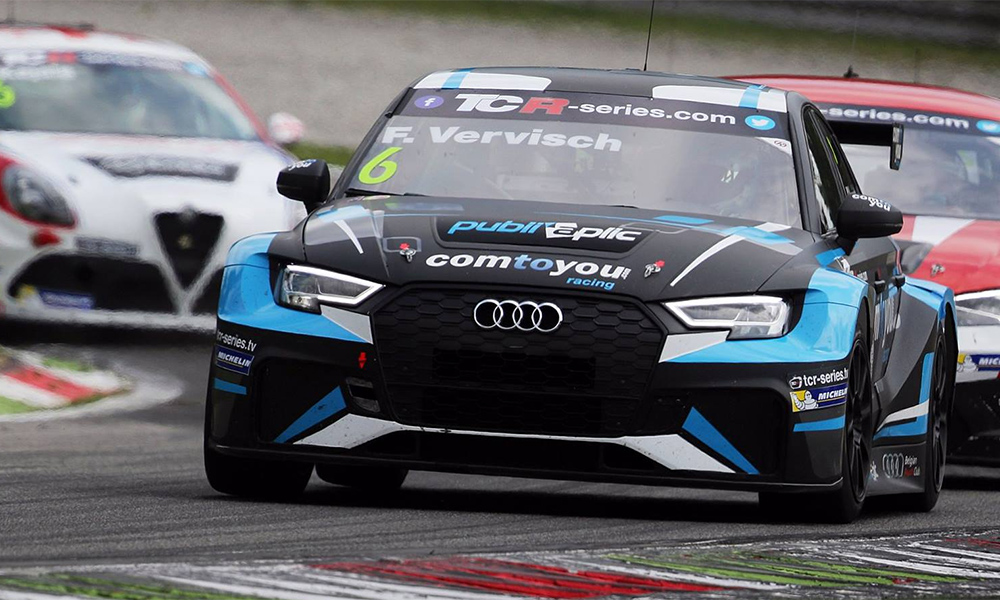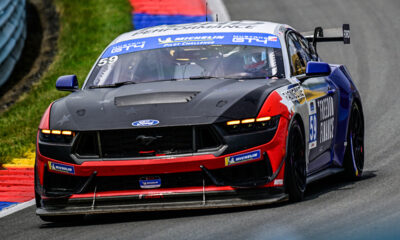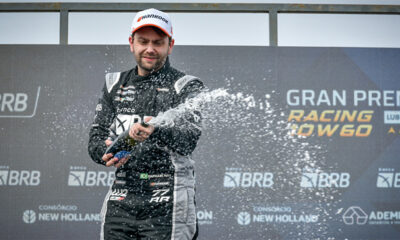
Photo: TCR International Series
The integration of TCR cars into the Continental Tire SportsCar Challenge has continued, with interest in the new-for-2018 class growing among competitors and manufacturers, according to IMSA’s Geoffrey Carter.
IMSA announced earlier this year that the global-spec touring car platform would debut in the series, initially as a third category alongside GS and ST, prior to a planned phase-out of ST machinery for 2019.
Carter, the Senior Director of Technical Regulations and Compliance, said the next step in the process will come in December’s IMSA-sanctioned test at Daytona, which will be used to determine the platform’s performance window and possible Balance of Performance variations from its initial homologation.
“We have a technical agreement and have spent some time in a technical working group with [the WSR] folks to explore the starting BoP,” Carter told Sportscar365.
“If we need to make a wholesale BoP adjustment across the board, like what we did with GTD in the beginning, to keep a stratified window, we’ll do that.
“The difficulty just adopting where they are is that they run by themselves. We have to control the performance between two classes. There’s definitely room between GS and ST to do that. But we think it may take some management.”
While TCR cars, in standalone races, have shown impressive performance levels, Carter doesn’t anticipate having to make wholesale changes to fit within the Continental Tire Challenge framework.
He reaffirmed plans to slot the TCR class in between GS and ST, which will both retrain its current performance levels.
“We think we might be pretty close to where we need to be,” he said. “But we’ll have to do the homework when we test them.
“We feel the balance is reasonable there in the first place. We have a couple of challenges with GS but we feel TCR is where we’d make the adjustments, slot it in the middle of the two, instead of pulling one up or one down.”
The Dec. 5-6 test will be the first opportunity for TCR cars to take part in an IMSA-sanctioned environment, although Carter said they already have data and correlation work from manufacturers in private testing at tracks in North America.
At least one car from each TCR manufacturer expected to compete in the class next year will be asked to take part in the test.
“We’ve got a delineated test plan that the IMSA technical committee is finalizing for all the classes,” Carter said. “This basis for the test across all platform is to come and run a prescribed run plan from IMSA. Once that’s been achieved there will be an opportunity for them to do their own test plan.
“The primary responsibility is for them to come and give us the information we’re asking for.”
TCR Interest Growing
Carter said interest in the new platform has been building, with between four to six manufacturers expected to be represented on the grid over the course of next year, and a minimum of four to eight cars for the season-opener at Daytona in January.
Audi’s RS 3 LMS and the Honda Civic Type R have been among the most publicized TCR cars for North America, with C360R having already committed to two-car Audi effort, although the Alfa Romeo Giulietta, as well as models from Volkswagen and Ford are understood to also be eligible.
Additionally, there’s been an initiative from LAP Motorsports to build a TCR-spec MINI.
Carter referenced the explosive growth of GT4 over the last 12 months and expects to have a similar trajectory in TCR between next year and 2019.
“We’re in early days at the moment for us in North America,” he said. “There’s some manufacturers where their chosen model for this particular platform is not in the marketplace yet.
“So they’ve got some of those on the drawing board potentially for late 2018 or 2019 release. So they have to hold tight and not put the race car out yet. We know of a couple of those programs.”
The transition to a global-spec platform will also be crucial for some Continental Tire Challenge teams, which have long been accustomed to running self-built cars.
“We saw this in GTD two years when we went from IMSA-spec to a global GT3-spec cars, and we saw the same thing this past year from GS to GT4,” Carter said.
“Now we’re seeing it in ST to TCR in that the privateers getting their head around not being able to build their cars anymore and buying a homologated package.
“The lineage of [CTSC] is a production car that’s been modified by a privateer. So that’s more of a cultural seed change there.
“We’re gauging the interest in TCR by those questions coming out of ST teams that realize they’re going to be making that transition. So we see a fair bit of interest there.”























